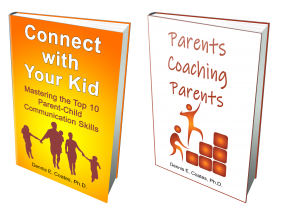The past, the present, and the future. Here are some things to keep in mind.
The past doesn’t exist. Once you’ve experienced something, that moment is lost forever, except as a stored memory. Also, the images you’ve stored in memory are likely to be modified each time you access them. The best way to use memories is to relish them over and over. And to learn from them. The worst way to use memories is to relive the pain that past experiences have caused you. And to feel the negative emotions all over again.
The future doesn’t exist, either. I was reminded of this recently during my morning swim. Standing at one end of the pool, I thought, “A half-hour from now, which will be a moment in my near future, I will have completed 20 laps.” At that moment, I had not done a single stroke. I imagined meeting my workout goal, and I imagined sitting in the whirlpool afterward – my reward. But none of that had happened yet. Later, as I sat in the whirlpool, I remembered envisioning that moment in the whirlpool a half-hour earlier, in my past…which now exists as a memory.
The best way to use imagined images of the future is to envision desired outcomes, what you have to do to get there, and the payoff for achieving the goal. The worst way to use imagined futures is to fret over possible negative outcomes.
The only thing that exists is a fully realized experience in the present moment. Everything else is a memory or something imagined. You can get your brain to present you with any these: an experience in the present moment, stored images of past experiences, or imagined images of possible future experiences.
Often when we are with other people, for example, a parent with a child, we are not experiencing the other person fully in that moment. We’re remembering something they did and how we felt about it. Or we imagine who we think they are or what they’ll do. Calling up these images from the past or the future distracts us from experiencing who they are, right here, right now. It distracts us from sensing who that person really is and empathizing with how they feel in that moment.
You can see how this can cause an interpersonal communication to go badly. It happens millions of times a day between parents and their kids.
Even though I know better, I often make this error myself. It’s human nature to react emotionally to what other people do or say. But when I do, my internal dialogue kicks in with memories and imagined realities, making it impossible for me to sense the individual in that moment.
However, sometimes I catch myself doing this and then make an effort to be mindful, to shut off the voice and images in my head and just let my senses do the work. The feeling I get when I reorient my perception to the present moment is like a physical shift in my being.
Of course, parenting involves many skills, and this is one of them: if you want your communications with your kids to be more positive, you need to stretch for empathy. Recognize your opportunity to be mindful, make an effort to still the voice in your head, set aside images from the non-existent past and the non-existent future, and just be with your child completely in that moment. It’s a beautiful, loving experience.
Later, sometime in a future moment, you can relish again your memory of that connection with your child.
More truth-telling about parent-teen communication.
My how-to instruction on empathy is the topic of Chapter 4 of Connect with Your Kid: Mastering the Top 10 Parent-Child Communication Skills.
 This book, along with Parents Coaching Parents, will help you make change happen.
This book, along with Parents Coaching Parents, will help you make change happen.

